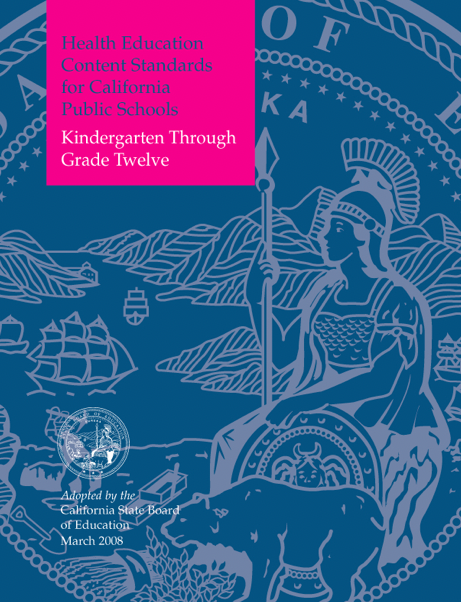In 2019, the California Department of Education asked the Orange County Department of Education to lead the state Health Education Framework rollout by providing optional guidance for K-12 teachers in public schools based on the state’s health education standards.
Since then, OCDE has assisted in creating a professional learning series and supplemental materials to help teachers deliver standards-based instruction and implement the updated guidance provided by the framework. The project also engaged all county offices of education through a statewide community of practice that continues to convene, building the capacity of leaders supporting health education implementation in schools throughout the state.
“The pandemic illuminated the importance of ensuring students have the knowledge and skills to understand health information,” said Dareen Khatib, who oversees Student Achievement and Wellness for OCDE. “Health education as a universal support for all students plays a critical role in developing their physical, mental and social emotional health while also impacting their academic achievement. Research continues to demonstrate that healthy students are better learners.”
So what exactly is a framework, how does it differ from the standards, and how does the California Healthy Youth Act fit into the equation? Watch the brief video above, check out our one-page guide, or keep reading below.
***
Health Education Content Standards for California Public Schools (2008)
Just as there are state-adopted standards for English, math, science and other subjects, content standards were approved in 2008 for health education, describing the knowledge and skills that all students should possess. These, of course, vary greatly by grade level.
For example, the standards say first-graders should be able to explain why sleep and rest are important for growth and good health. Students in grades seven and eight should be able to analyze the nutritional value of different foods and identify ways to increase daily physical activity. High schoolers should be able to demonstrate assertive communication skills to resist pressures to use alcohol, tobacco and other drugs.
You can access the health education standards by grade level here: www.cde.ca.gov/be/st/ss/
California Healthy Youth Act (2016)
Originally known as AB 329, the California Healthy Youth Act is a state law that requires schools to provide students with comprehensive sexual health education, along with information about HIV prevention, at least once in high school and once in middle school, starting in seventh grade.
The California Healthy Youth Act is not a curriculum — each district is responsible for establishing its own curriculum — and it affirms the right of parents to opt out of sex education. Required topics include the safety and effectiveness of contraceptive methods, sexually transmitted diseases, gender identity, sexual orientation and healthy relationships.
You can read the full text of AB 329 on the California Legislative Information website. Or, check out our list of questions and answers about the California Healthy Youth Act: newsroom.ocde.us/six-questions-and-answers-about-the-california-healthy-youth-act/
Health Education Framework for California Public Schools (2019)
Finally, the Health Education Framework was drafted as an optional guide to help educators deliver lessons tied to California’s health education standards. It was approved by the state Board of Education on May 8, 2019.
This document has recommendations related to physical, mental, emotional and social health, but it’s also not a curriculum. Think of it instead as a voluntary handbook designed to help districts and teachers develop curriculums and instruction that enable students to make healthy choices and avoid high-risk behaviors.
In fact, the framework covers these six content areas:
- Nutrition and physical activity
- Growth, development and sexual health
- Injury, prevention and safety
- Alcohol, tobacco and other drugs
- Mental, emotional and social health
- Personal and community health
According to the state Department of Education, the framework also includes additional guidance on the California Healthy Youth Act, as well as suggestions on the use of gender-neutral and LGBTQ-inclusive language during health instruction. These are intended to make sure classroom environments are free of bullying and harassment.
As with other optional frameworks, state funding has been allocated to create professional development opportunities and resources for teachers, administrators and paraprofessionals.
The project also developed the California Health Education website to house existing and newly developed resources. The statewide Health Education Community of Practice continues to create resources and support for educators, including materials related to the new legislation mandating mental health education in middle and high school health courses.
Here’s what the California Department of Education has to say about the state’s health education initiatives: www.cde.ca.gov/ci/he/cf/cahealthfaq.asp.
(A version of this post and video is available in Spanish by clicking the “En Español” tab at the top of this post, or by clicking here. Una versión de esta publicación y video está disponible haciendo clic en la pestaña “En Español” , o aquí.)

